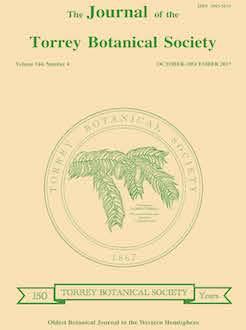This article presents the discovery of earliest known references to the cultivation of Japanese knotweed, Reynoutria japonica, in North America. As described in articles from 1868, 1872, and 1875 there were three distinct introductions of the plant in the 1860s, two from Europe and one from Japan. The European introductions consisted of the now widespread, seedless female clone introduced into commerce by Philipp von Siebold in the 1840s and a dwarf, seed-producing variety with reddish stems, probably also introduced by von Siebold. The introduction from Japan was sent by Thomas Hogg to his brother James's nursery in New York City and produced “an abundance of rose-colored fruits.” Serendipitously, an herbarium specimen collected from Hogg's plant in 1873 was discovered in in 2006 and its examination strongly suggests that the introduction consisted of at least one male and one female plant. Thomas Hogg's independent introduction of the species from Japan could well explain the higher levels of genetic diversity displayed by Japanese knotweed populations in eastern North America compared to those in Europe.
BioOne.org will be down briefly for maintenance on 12 February 2025 between 18:00-21:00 Pacific Time US. We apologize for any inconvenience.
How to translate text using browser tools
13 September 2017
The introduction of Japanese knotweed, Reynoutria japonica, into North America
Peter Del Tredici
ACCESS THE FULL ARTICLE
Fallopia japonica
George Thurber
James Hogg
Polygonum cuspidatum
Thomas Hogg
Torrey Botanical Club





